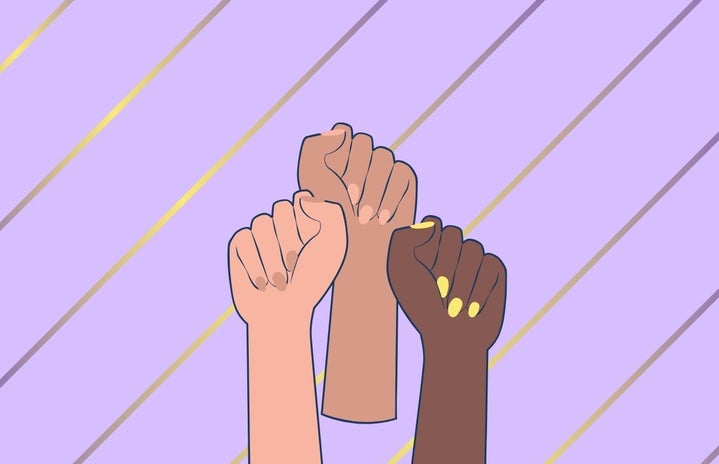For the Spring semester, I decided to take the History of American Women, since it would fill credits for my Politics and Human Rights major, and I found it particularly interesting. On the first day of class, my professor pointed out how our class was almost entirely women, minus two guys- one of the guys dropped out after one week. She went on to talk about why we have a separate class to specialize in women’s history. This brought up an important question: Why are women not represented equally in regular history classes?
In 1985, a group of female artist-advocates emerged in New York City. They call themselves The Guerrilla Girls and the members remain anonymous by wearing gorilla masks in public, and by going under pseudonyms of historical female artists, like Frida Kahlo. They began their activism by putting up posters on buildings across lower Manhattan to create an awareness around the discrimination occuring in art galleries and museums against women and people of color.
Even to this day, their artwork is humorous and engaging, in order to create awareness surrounding sexism and racism in the industry. For instance, in 2007, The Guerrilla Girls created a tabloid style poster called Horror on the National Mall!, which pictured the members locked up in a cell with the caption, “Thousands of women locked in the basements of D.C. museums.” These sorts of humor induced posters gather a lot of followers because it is outrageous and eye-catching.
Although it has been 100 years since women gained the right to vote, there are still so many incongruities and inequalities. According to the National Endowment for the Arts, women make up half of the visual artists in American but only make 74 cents for every dollar male artists make. Plus, as female artists age, they make even less to every dollar made by the male counterpart. Statistics from artnet News show that over the past decade, only 11% of all acquisitions and 14% of exhibitions at 26 major U.S. museums were done by women. The Art Newspaper analyzed 3,050 galleries and 10% of galleries featured no women at all, and only 8% if galleries featured more women than men.
At the Brooklyn Museum, they promote female art year round with the Elizabeth A. Sackler Center for Feminist Art. The current installment is Out of Place: A Feminist Look at the Collection, which challenges the institutional boundaries created by museums that directly limit the influence of women and people of color. Forty-four female artists are displayed in this exhibit and they touch topics ranging from racism in America, the sacrifice of having children, stereotypical gender roles, fashion, to the women forgotten in history.
A very striking part of this exhibit is The Dinner Party by Judy Chicago, featuring a triangular table with plate settings for 39 mythical and historical women, as well as honoring the names of 999 other women on the base of the piece. This piece creates a sense of empowerment and solidarity, as it honors women who are usually left out of most historical records. Each place setting is painted with colors and designs specific to the woman it is honoring. All the plates have a similar butterfly or vulvar form. Chicago spent five years creating this masterpiece and it continues to live on and weave into our society to this day.
It has been 100 years since the 19th amendment was passed, and yet there are still so many incongruities between men and women that it is almost appalling that we still have to fight for our rights. It is a constant fight that never ends. It once was the fight for abolition, and then it was the fight for women’s right to vote. Now it is the time to fight for our story; the story that includes the voices from all the women who have been forgotten or unrepresented in ‘HIS’- story. It is about time that women can have their artwork integrated into all major museums; it is about time women can receive the healthcare they need without question; it is about time women can freely walk without being verbally harassed by catcallers. As a result of the Guerrilla Girls and female artists like Judy Chicago who laid down the stepping stones for representation and equality, girls of the future can live a more free life. Perhaps one day we will no longer have to march for our rights and instead men and women can march in solidarity.



